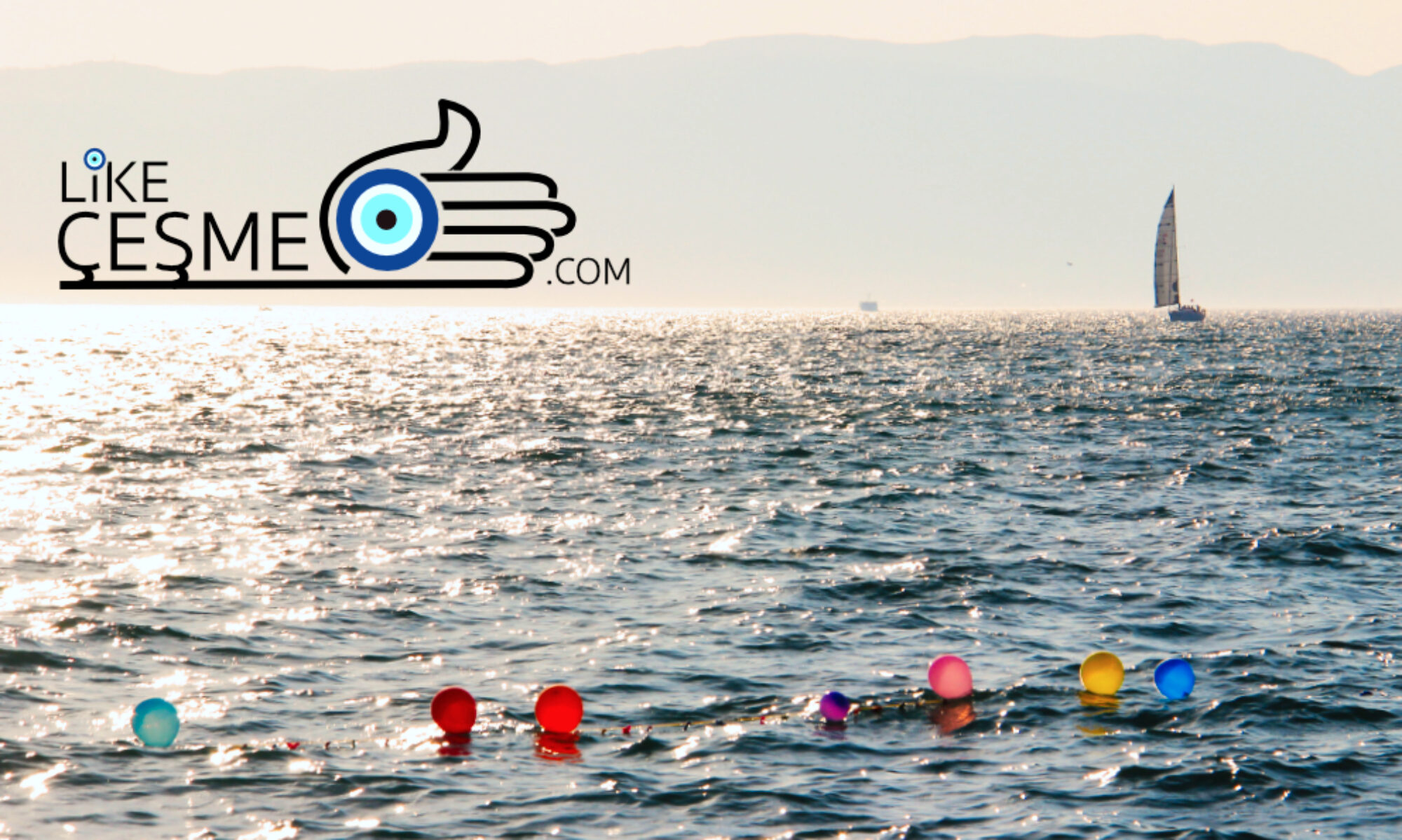A city with a rich historical and cultural heritage hosts several notable Izmir museums that offer insights into its diverse past and vibrant contemporary culture. Below are listed some of the notable İzmir museums:
Izmir Museums – Table of Contents
See also Izmir Archaeological Sites and Izmir Attractions.
İzmir Archaeology Museum
Archaeology Museum (Arkeoloji Müzesi) Sümer, Halil Rıfat Paşa Cd. No:1, 35260 Konak/İzmir, Turkey. Telephone: +90 (232) 483 7254. Opening hours: 7 days/week, summer 08:30-19:00, winter 08:30-17:30. Admission: TBC. Turkish Museums İzmir Archaeology Museum English Website.
The İzmir Archaeology Museum in Konak is one of the most significant museums in Türkiye, offering a comprehensive look into the region’s rich historical and cultural heritage. It houses an extensive collection of artefacts that span several millennia, reflecting the diverse civilizations that have flourished in and around İzmir. Constructed in 1984, the museum is a purpose-built facility, providing a spacious (5,000 square metres) and well-organized exhibit environment. The building’s design enhances the visitor experience by offering ample space for large displays and interactive exhibits.
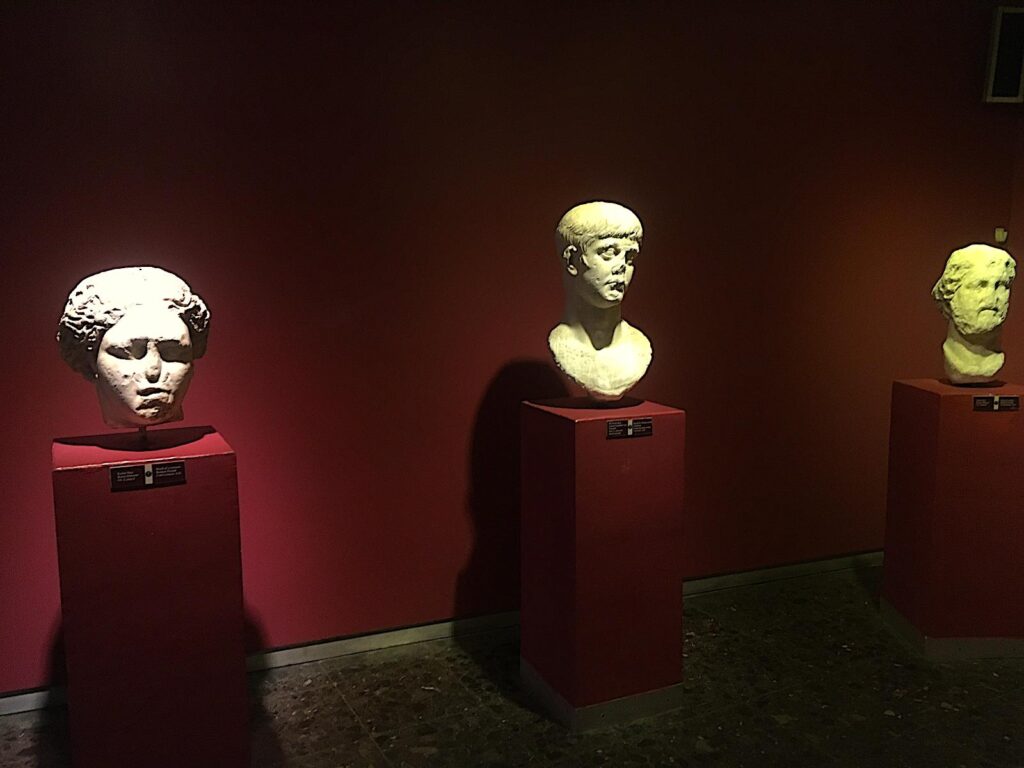

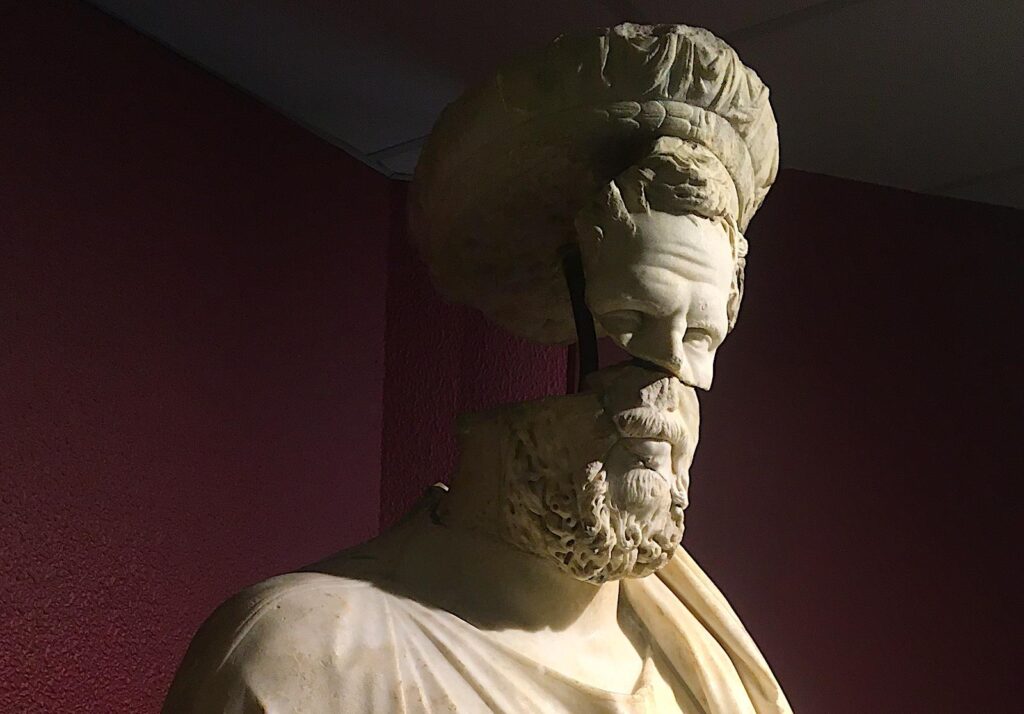

The İzmir Archaeology Museum’s vast and diverse collection covers many historical periods and cultural influences. (i) Prehistoric Period: Tools, pottery, and other Neolithic artefacts highlight the region’s early human settlements. Weapons, jewellery, and everyday objects from the Bronze Age showcase the technological advancements of early civilizations. (ii) Classical Period: Greek antiquities, including statues, pottery, and inscriptions from ancient Greek cities such as Smyrna, Ephesus, and Pergamon. A significant collection of Roman sculptures, mosaics, coins, and everyday items. The museum’s Roman collection includes marble statues, architectural fragments, and detailed mosaics depicting mythological scenes. (iii) Byzantine Period: Items related to the early Christian and Byzantine periods, including icons, religious manuscripts, and ecclesiastical objects. Fragments of Byzantine architecture, including columns, capitals, and mosaics, illustrate the artistic and architectural styles of the period. (iv) Hellenistic Period: The museum features a rich collection of Hellenistic sculptures, including portraits of notable figures and gods. A diverse array of jewellery and coinage from the Hellenistic period reflects the wealth and trade of the era.
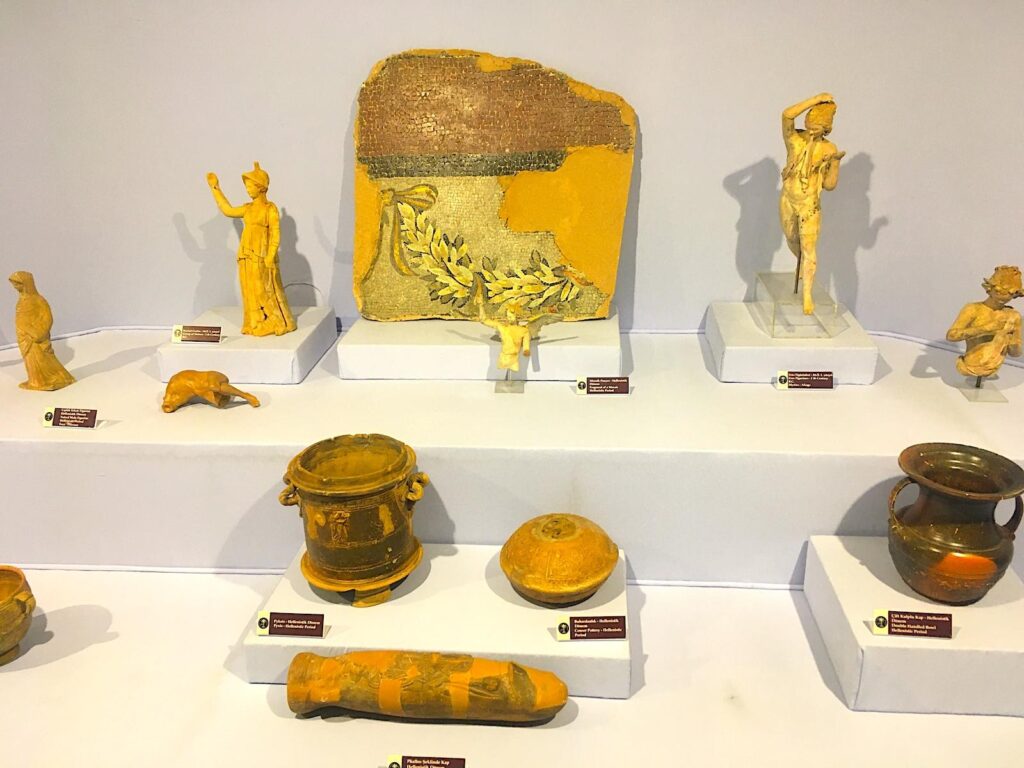

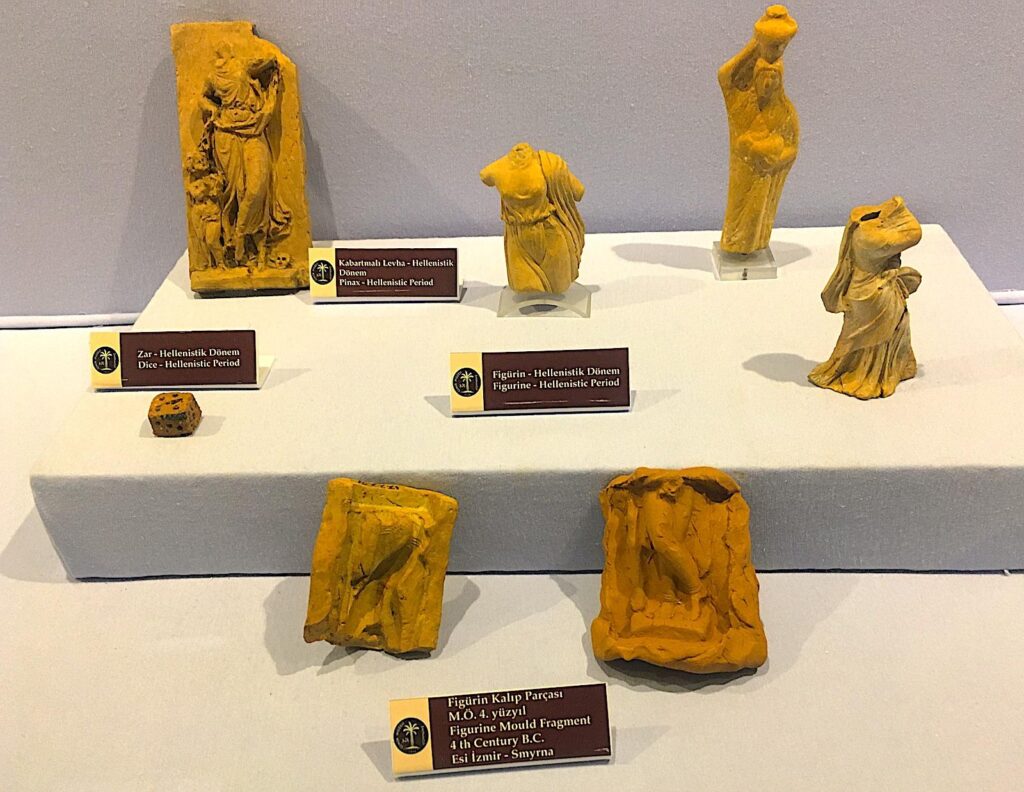
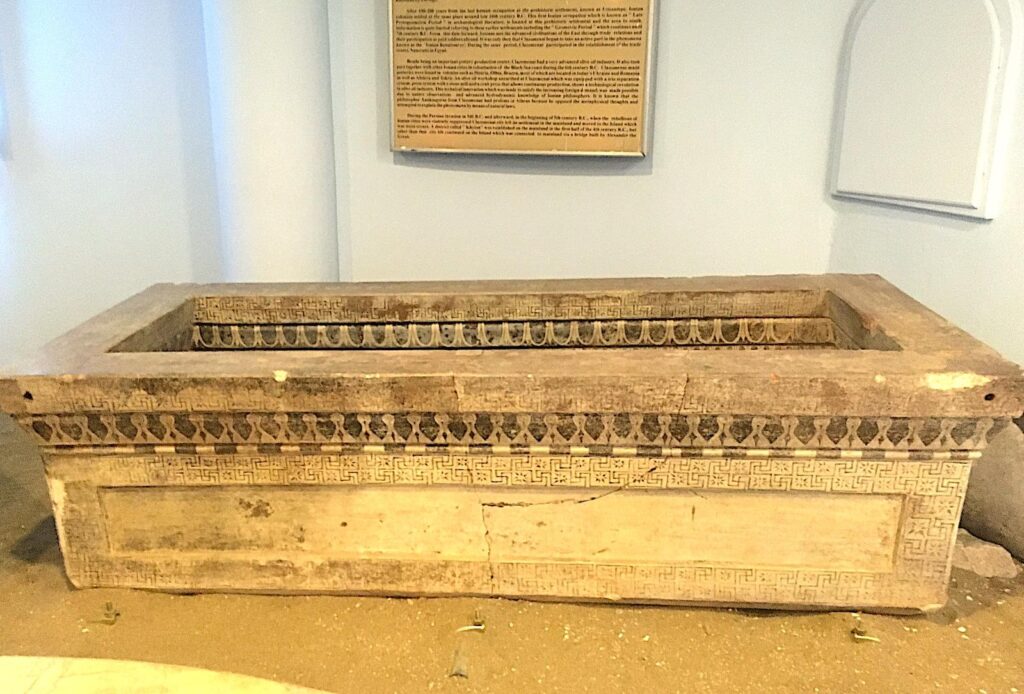
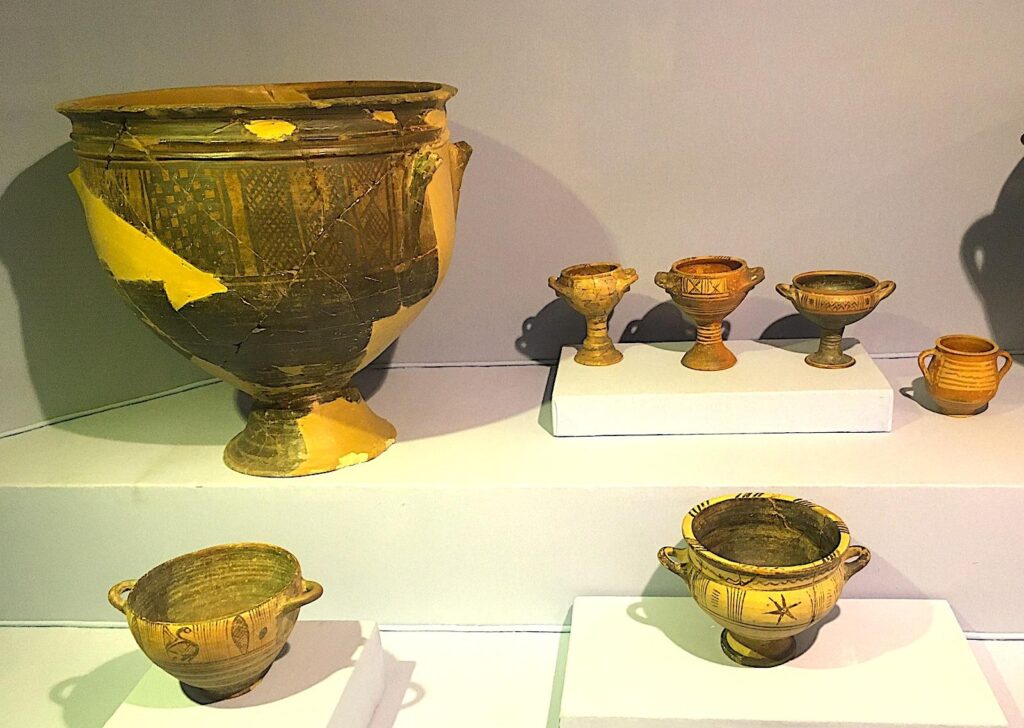
Notable pieces in the museum’s collection include a fragmentary marble statue of Antinous as Androklos, the legendary or mythical Athenian founder and first king of Ephesus, part of a statue group, perhaps depicting the legend of Androklos with his dog hunting a wild boar, found in 1927 in the Vedius Baths & Gymnasium, Ephesus 138-161 A.D. The realistic depiction and detailed craftsmanship of “The Bronze Statue of a Running Athlete” and “The Bronze Statue of Demeter” are both from Aegean shipwrecks near Nemrut Limanı (area of Foça, north of İzmir). A collection of Classic Period terracotta figurines from ancient Smyrna, these small statues depict various deities, animals, and everyday scenes. The Hellenistic Sarcophagus of Weeping Women, whose intricately carved marble sarcophagus is adorned with figures of mourning women.
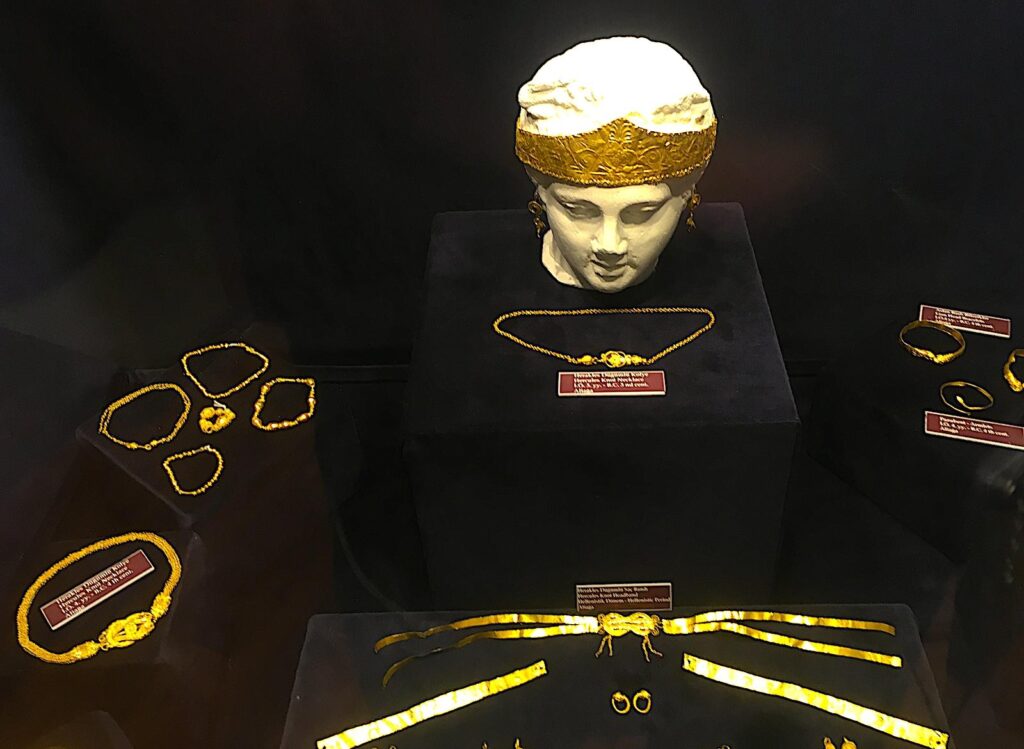

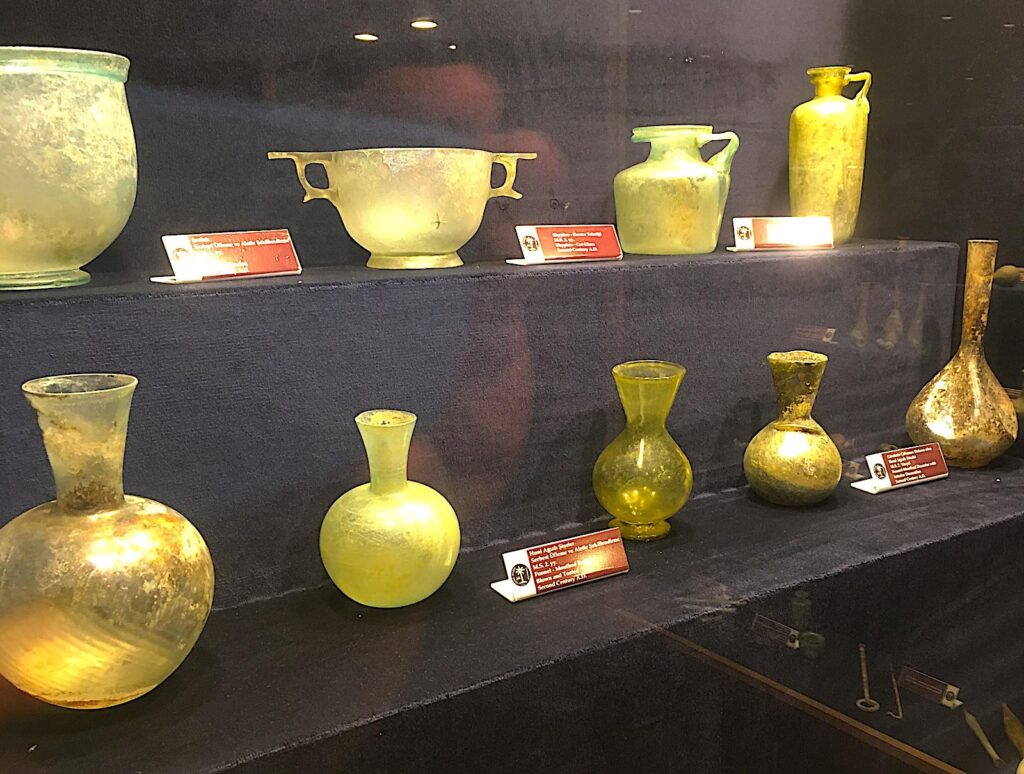
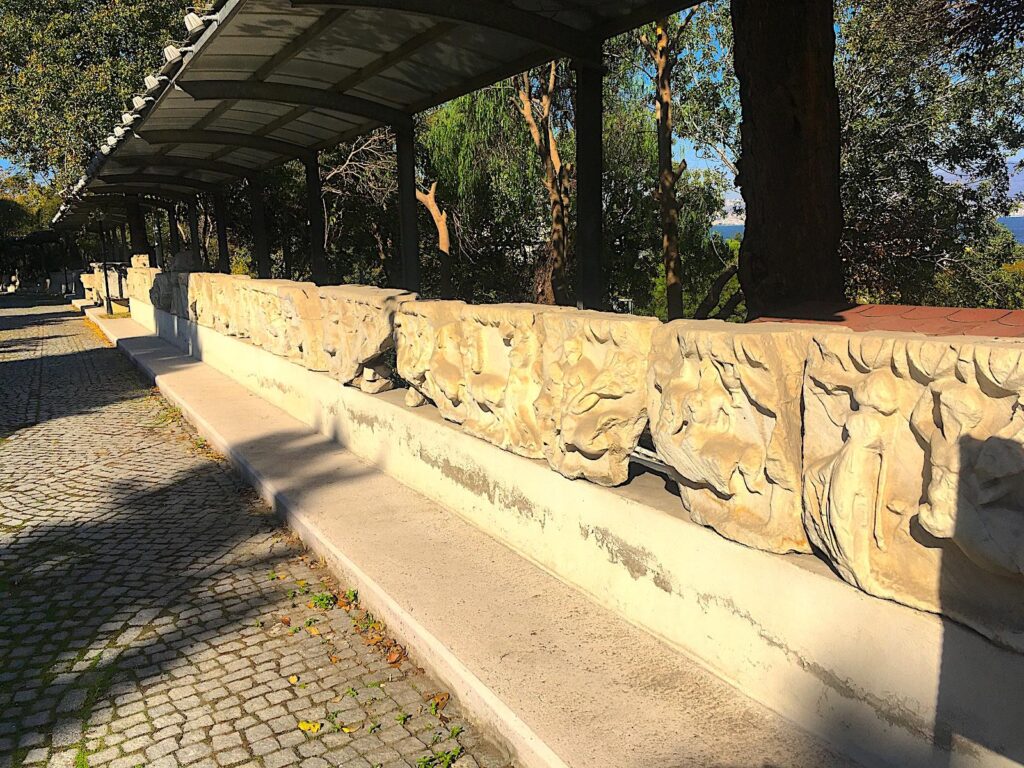
İzmir Ethnography Museum
İzmir Archaeological Museum (Arkeoloji ve Entografya Müzesi) Yeşiltepe, Konak Mahallesi Halil Rıfat Paşa Cad, Bahri Baba Parkı No:4, 35260 Konak/İzmir, Turkey. Telephone: +90 (232) 489 0796 / 483 7254. Opening hours: 7 days/week, year-round, 08:30-17:30. Admission is free.
The İzmir Ethnography Museum in Konak, adjacent to the İzmir Archaeology Museum, offers a deep dive into the cultural and social history of the İzmir region and the broader Aegean area. It focuses on the people’s traditional lifestyle, customs, and craftsmanship, providing a comprehensive look at the ethnographic heritage of the area. The museum is in a restored neoclassical hospital building built in 1831, repaired by the French in 1845, and converted into a nursing home for poor Christian families. The stone building was used as a maternity ward, sanitation ward, and Health Directorate service building during the Republican era. In December 1984, the museum was given to the Ministry of Culture and Tourism to use as the Ethnographic Museum.
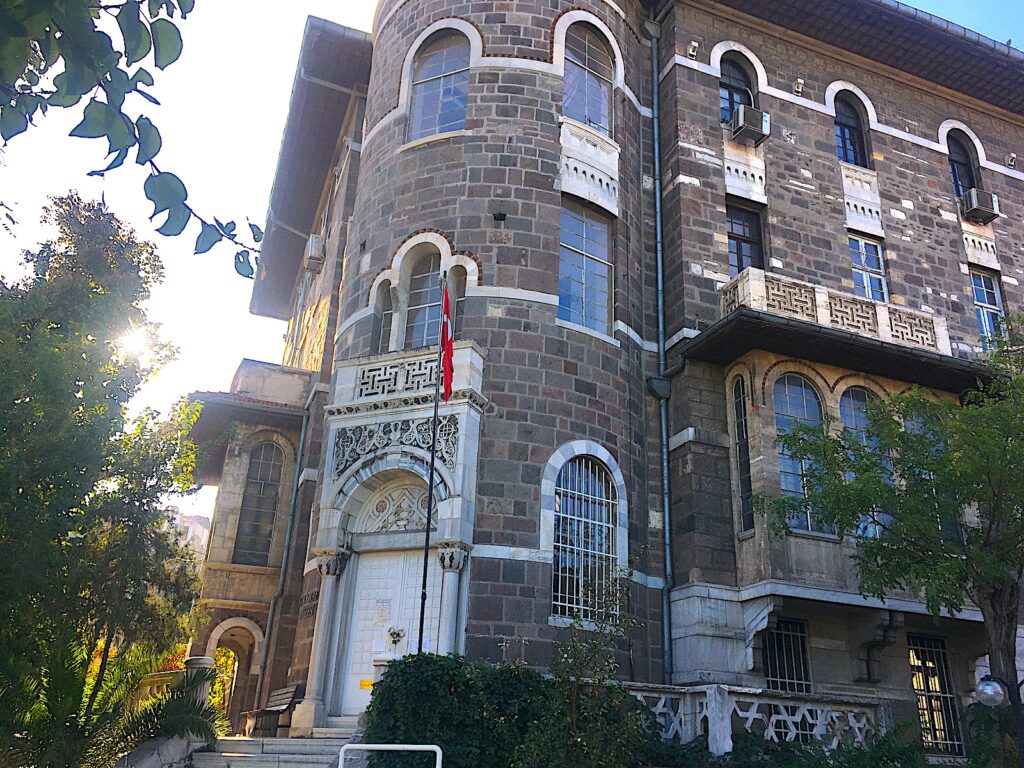
The collections are diverse and curated to reflect various aspects of traditional life in the region. (i) Traditional Clothing: The museum features many traditional costumes from different parts of the Aegean region. These include elaborate bridal dresses, everyday wear, and ceremonial outfits. Alongside the clothing, numerous accessories such as jewellery, belts, and headgear complement the traditional costumes. (ii) Household Items: The museum displays various traditional household items, including furniture, kitchen utensils, and tools used in daily life. A collection of crafted ceramics and pottery pieces showcases the craftsmanship and artistic expression of the local artisans. (iii) Craftsmanship and Trades: Exhibits on weaving and embroidery highlight the intricate techniques and patterns used in traditional textile production, including looms, woven fabrics, and embroidered pieces. Tools and finished products from traditional carpentry and metalworking trades are showcased. (iv) Folk Arts and Music: The museum houses a collection of traditional musical instruments, such as the saz (a stringed instrument), drums, and flutes, reflecting the musical heritage of the region. Various examples of folk art, including paintings, carvings, and decorative items, demonstrate the Aegean people’s vibrant and diverse artistic traditions.
Museum of History & Art
Museum Of History And Art (T.C. Kültür ve Turizm Bakanlığı İzmir Tarih ve Sanat Müzesi), Mimar Sinan, İzmir Fuarı İçi Yolu 9/13, 35220 Konak/İzmir. Telephone: +90 (232) 489 0796 / 483 7254. Opening hours: 7 days/week, summer 08:00-18:30, winter 08:30-17:30. Admission: TBC.
The İzmir History and Arts Museum, located in the Kültürpark since 2004, showcases artefacts and artworks that span various historical periods and artistic movements. The museum complex consists of multiple buildings, each dedicated to different themes and collections featuring diverse exhibits, categorized into three main sections: Archaeological Artifacts, Stone Works, and Ceramics and Metal Artifacts.
(i) Archaeological Artifacts: This section houses artefacts from various ancient civilizations that thrived in the İzmir region, including the Hittites, Lydians, Greeks, and Romans. Marble statues and busts from the Greek and Roman periods are prominently displayed. A collection of ancient coins and jewellery offers insights into the past’s trade, economy, and personal adornment practices. (ii) Stone Works: The museum boasts an impressive collection of stone reliefs and sculptures depicting mythological scenes, historical events, and everyday life in ancient times. Stone inscriptions provide valuable information about ancient civilisations’ political, social, and religious aspects. Columns, capitals, and other architectural fragments illustrate ancient buildings’ architectural styles and construction techniques. (iii) Ceramics and Metal Artefacts: The museum’s pottery collection spans several millennia, showcasing the evolution of ceramic art and techniques from the Neolithic period to the Byzantine era. Exhibits of metal artefacts, including tools, weapons, decorative items, and ancient glassware, demonstrate the intricate glass-blowing techniques and the aesthetic preferences of different historical periods.
Sculptures and ceramic objects are collected from settlements in the Izmir region, from prehistoric to late Byzantine periods, with a large collection from the Smyrna – Tepekule Mound (Bayrakli district) from the 11th – 9th century B.C. Artefacts are from the ancient cities of Baklatepe, Limantepe, Kocabaştepe and Panaztepe, as well as Iasos (Güllük), Phokaia (Foça), Klazomenai (Urla), Kyma (Aliağa), Erythrai (Ildırı) and Pitane (Çandarlı). The precious objects section includes oil lamps, figurines, glassworks, bronze objects, coins and a treasury room. Highlights include the coin collection, including 7th-century B.C. coins minted at
Arkas Art Centre
Arkas Sanat Merkezi – Kültür, 1380 . Sk. 3-1, 35230 Konak/İzmir. Telephone: +90 (232) 464 6600. Open Tuesday – Sunday 10:00-18:00. Arkas Art Centre English Website. As of August 2024, the Museum had a notice stating, “Due to renovations and preparation for the new exhibition, we are closed until September”.
The Arkas Art Centre in Alsancak, İzmir, is dedicated to promoting and showcasing art in various forms. It is a vibrant hub for contemporary and classical art, providing a dynamic space for exhibitions, educational programs, and cultural events. The Art centre is housed in a beautifully restored 19th-century building called the “Pietro de Franceschi Mansion.” With its neoclassical architectural features, the mansion offers an elegant and atmospheric setting for art exhibitions and cultural activities. It does not have a permanent collection but instead hosts a rotating series of temporary exhibitions featuring works from various genres and periods, often loans from other museums, private collections, and the extensive Arkas Collection.
The centre frequently showcases contemporary art, highlighting works by Turkish and international artists exploring current themes and trends in the art world, offering fresh and innovative perspectives. Exhibitions of classical art feature works from the Renaissance, Baroque, and other significant art movements, often including paintings, sculptures, and decorative arts, providing historical context and artistic appreciation. The Arkas Art Centre organises thematic exhibitions focusing on specific genres, such as maritime art, impressionism, or abstract art.
Atatürk Museum
Atatürk Museum, Alsancak Mh., Gündüğdu Caddesi No:242, 35220 Konak/İzmir, Turkey. Telephone: +90 (232) 489 0796 / 483 7254. Opening hours: 7 days/week, summer 08:00-18:30, winter 08:30-17:30. Admission is free.
The Atatürk Museum in İzmir is dedicated to Mustafa Kemal Atatürk, the founder of modern Turkey, and commemorates his visits to the city between 1923 and 1934. The 852 square metre neoclassical mansion that houses the Atatürk Museum was constructed in 1875 and was a private residence for a wealthy carpet merchant, Takfor Efendi. During the Turkish War of Independence, the building was confiscated by the government and used for various official purposes. In 1922, when İzmir was liberated, Mustafa Kemal Atatürk stayed in this house during his visits to the city. The building was officially converted into a museum in September 1941. It was dedicated to preserving the memory of Atatürk and showcasing his life, contributions to the Turkish Republic, and visits to İzmir.
The Atatürk Museum features various rooms and exhibits that provide insight into the life and legacy of Mustafa Kemal Atatürk. The entrance hall sets the tone for the museum, featuring portraits of Atatürk and information about his life and achievements. The reception room is designed to reflect the early 20th-century style, with period furniture and decor. It showcases how the house might have looked when it served as a residence and reception area during Atatürk’s visits. The bedroom where Atatürk stayed during his visits to İzmir is preserved with original furniture and personal items. It includes his bed, desk, and personal effects. The study room contains Atatürk’s books, documents, and writing materials. The dining room is furnished with period-appropriate dining sets and decor. It illustrates the hospitality and social customs of the time, reflecting the formal dinners and gatherings during Atatürk’s visits. Several other rooms are dedicated to various exhibitions that display photographs, documents, and personal items related to Atatürk.
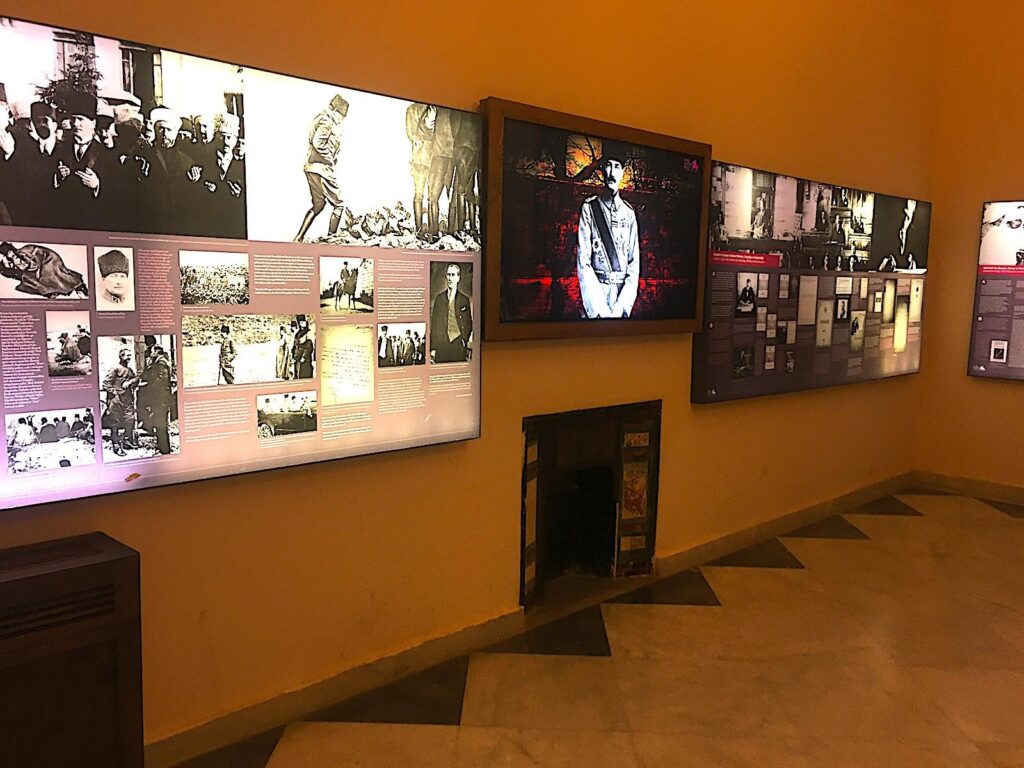
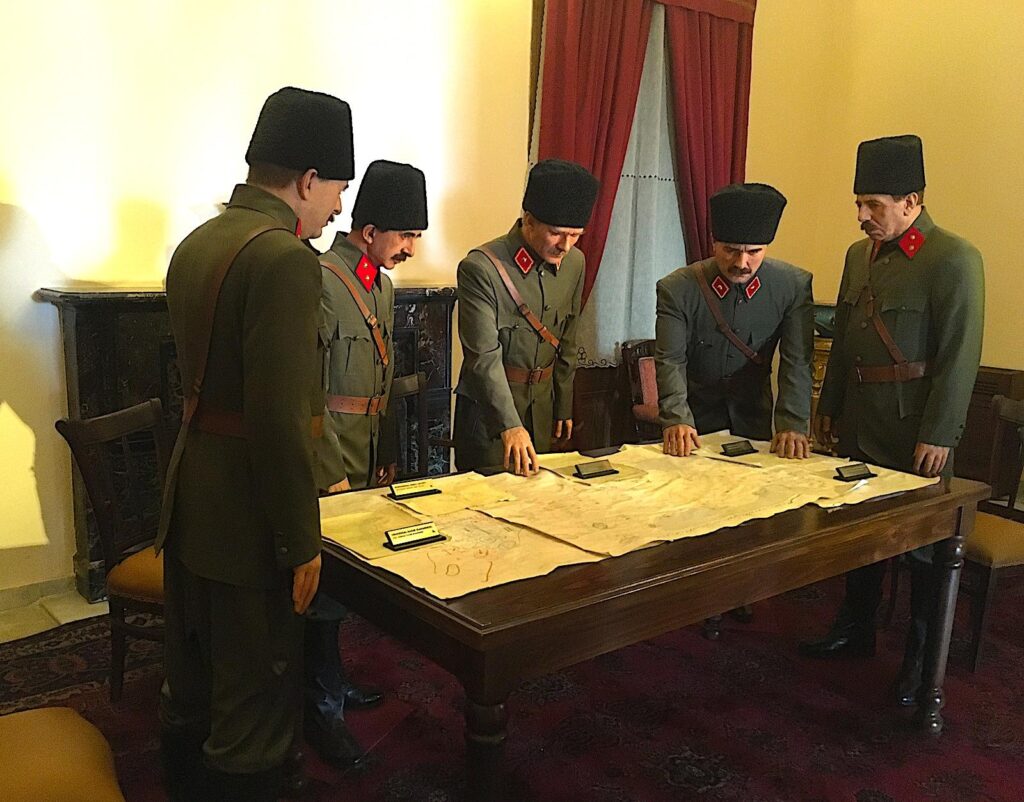
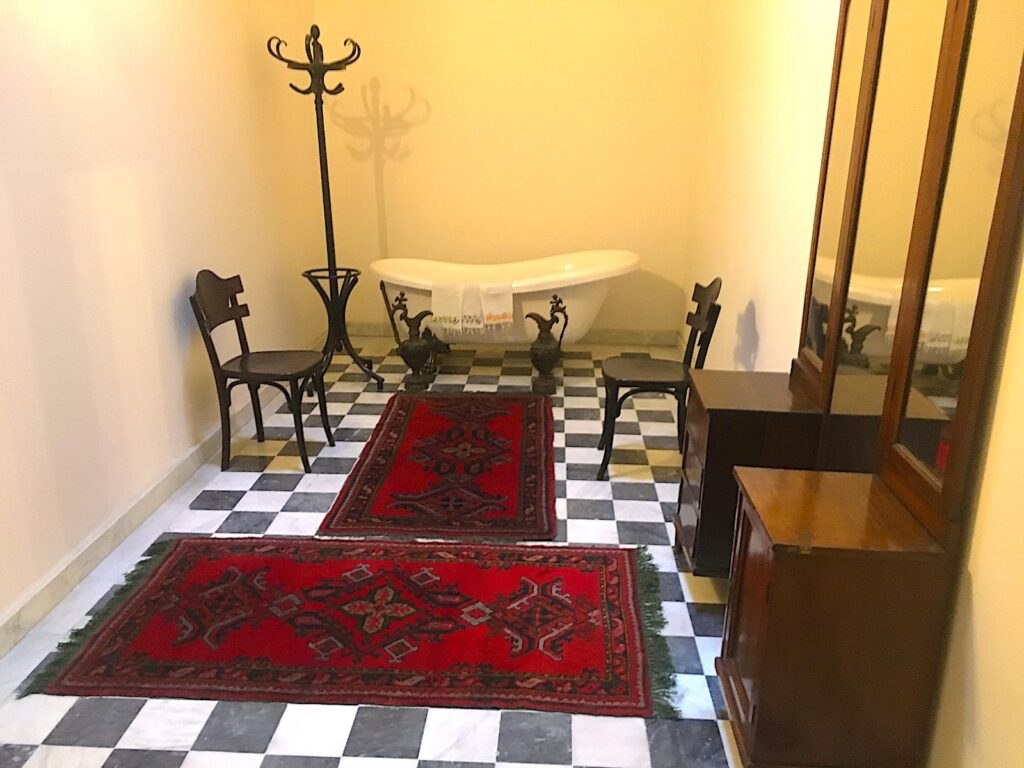
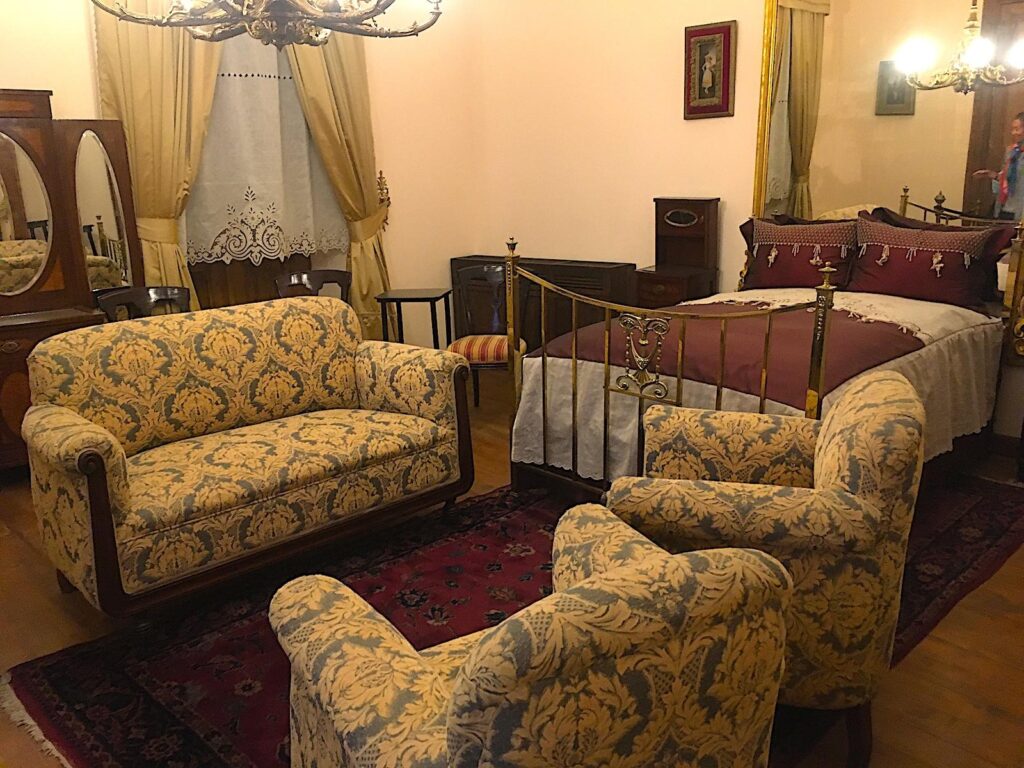
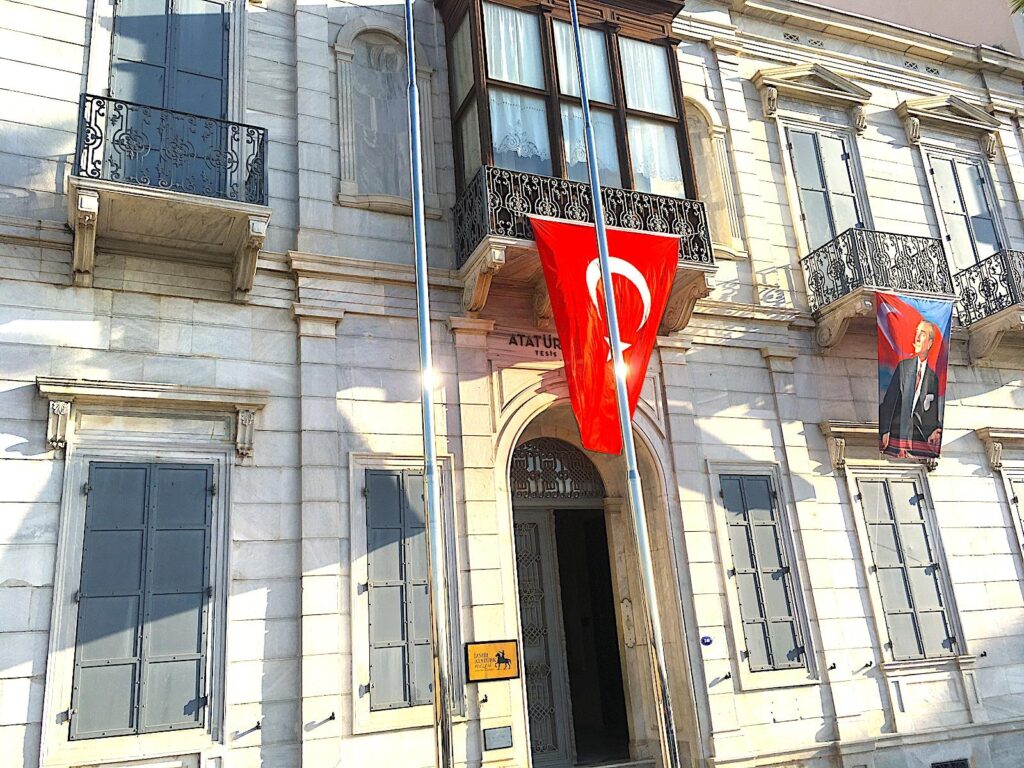
Artefacts in the Atatürk Museum feature many of Atatürk’s items, including his clothes, hats, walking sticks, and other accessories. A vast collection of photographs documents significant moments in Atatürk’s life, including his military career, role in the War of Independence, and political achievements. The museum also displays various official documents, letters, and decrees written by Atatürk. The museum also exhibits medals, awards, and honours received by Atatürk. These items highlight his recognition and respect both nationally and internationally. The building was restored and renovated in 1978, and many of the ethnographic objects of the museum were moved when the İzmir Archeology & Ethnography Museum (see above) opened in 1988.
İsmet İnönü’s Museum House
İsmet İnönü’s Museum House (İnönü Müze Evi), Türkyılmaz, İnönü Sk. No:20, 35260 Konak/İzmir, Turkey. Telephone: +90 (543) 422 5710 / (533) 246 2244. İnönü’s Museum House website link.
İsmet İnönü’s Museum House is dedicated to the prominent Turkish statesman and the second President of Turkey. The museum is situated in the Alsancak district of İzmir in the last 19th-century building that served as İnönü’s residence during his time in İzmir. The museum displays a wide range of İnönü’s items, including clothing, accessories, and everyday objects. A rich collection of photographs documents significant moments in İnönü’s personal and professional life. The museum houses a collection of important documents, letters, and correspondences, offering insights into İnönü’s political decisions and his role in shaping modern Turkey. The house has period-appropriate furniture and decor, recreating the era’s ambience. Various awards, medals, and honours received by İnönü throughout his career are displayed, highlighting his achievements and recognition.
The museum serves as an educational resource, providing visitors with detailed information about İsmet İnönü’s contributions to Turkish history, especially during the early years of the Republic of Turkey. It covers key aspects of his life, such as his role in the War of Independence, his tenure as Prime Minister, and his presidency following Mustafa Kemal Atatürk. The museum offers guided tours to give visitors detailed narratives and explanations of the exhibits. Some sections of the museum feature interactive displays, enhancing the educational experience and engagement for visitors of all ages.
İzmir Natural History Museum
Ege Üniversitesi Tabiat Tarihi Müzesi – Erzene, 35040 Bornova/İzmir. Telephone: +90 (0232) 388 2601. Opening hours: Monday-Friday 09:00-11:30/13:00-16:30. Admission: €TBC. Website Ege University Natural History Application & Research Centre.
The İzmir Natural History Museum in the Bornova district is dedicated to the natural world, offering visitors a comprehensive look at the biodiversity, geology, and palaeontology of the İzmir region and beyond. Located within the Ege University campus since 1967, it is an educational resource and a centre for scientific research. The museum is housed in a spacious modern building, facilitating exhibition and research activities. The museum features a wide array of exhibits that cover various aspects of natural history. Geology and Mineralogy (mineral collection and rock formations), Palaeontology (fossils, dinosaur exhibits, and prehistoric marine life), Botany (flora of Türkiye and herbarium), and Zoology (animal specimens and ecosystems).
İzmir Women’s Museum
İzmir Kadın Müzesi – Akıncı, 1298. Sk. No:14, 35240 Konak/İzmir. Telephone: +90 (0232) 484 0481. Opening hours: Tuesday-Saturday 09:00-17:00. Admission is free. Turkish Museums – İzmir Women’s Museum English Website.
The İzmir Women’s Museum in the Konak district is a pioneering foundation dedicated to celebrating the achievements and contributions of women throughout Turkish history and one of the few museums in the world focused exclusively on women’s history and culture. The museum opened in January 2014 and features a wide range of exhibits that highlight women’s roles, achievements, and experiences in various fields and periods. The museum showcases prominent women from different eras of Turkish history, including those who have contributed significantly to politics, literature, science, and the arts. These exhibits include personal artefacts, photographs, and detailed biographies. Displays highlight women’s cultural and social contributions to Turkish society, including traditional crafts, music, dance, and other forms of artistic expression. The museum also focuses on women’s everyday lives, illustrating how their roles and responsibilities have evolved over time regarding family life, education, and work.
There are exhibits dedicated to the feminist movement in Türkiye, documenting the struggle for women’s rights and equality, including historical documents, protest memorabilia, and profiles of key activists. The museum celebrates contemporary women impacting various fields, showcasing their work and achievements. The museum features interactive displays that engage visitors and provide a more immersive learning experience, including multimedia presentations, touchscreens, and audio-visual installations.
İzmir Toy Museum
Ümran Baradan Çocuk Müzesi – Yeşiltepe, Birleşmiş Milletler Cd. No:8, 35260 Konak/İzmir Telephone: +90 (0232) 425 7513. Opening hours: Tuesday-Saturday 09:00-17:00. Admission is free.
The İzmir Toy Museum (the Umran Baradan Game and Toy Museum) was opened by the ceramic artist Ümran Baradan in 2004 as the “Children’s Museum”. It was donated to Konak Municipality, and after the restoration of the building, it was reopened in January 2010 as the İzmir Toy Museum. Among one of the most notable toy museums in the world, the museum has two floors. In the garden of the building, there are statues of children playing on the street and reliefs on the walls. More than 1,000 toys and artefacts are in the museum, dating from the 1800s. At the museum’s entrance is a cafeteria, recreation area and souvenir area covered with the famous painter Bruegel’s painting called “Children’s Games”. The İzmir Toy Museum, situated in the Konak district, highlights the role of toys in cultural and social history, showing how play has evolved and reflects broader societal changes.
The museum provides a unique lens through which visitors can learn about history, culture, and childhood development. The museum boasts a diverse and fascinating collection of toys, providing a comprehensive look at the evolution of playthings over the centuries. The museum features many antique toys, including dolls, tin soldiers, and wooden and mechanical toys from the 19th and early 20th centuries. The collection includes toys from various countries, highlighting the cultural differences and similarities in children’s playthings across the globe. Displays of educational toys illustrate how play has been used for learning and development. These exhibits include puzzles, building blocks, and early scientific toys. The museum also features a selection of modern toys from the latter half of the 20th century. This includes action figures, dolls, electronic toys, and popular items from recent decades. The museum often organizes themed exhibits that focus on specific types of toys, such as train sets, toy cars, or comic book characters. The İzmir Toy Museum is designed to be engaging and interactive, and many exhibits allow visitors to touch and play with some of the toys, creating a hands-on experience that is both educational and fun.
The Turkish State Railways (TCDD) Museum in İzmir
TCDD İzmir Müzesi – Alsancak, Atatürk Cd. No:444, 35000 Konak/İzmir. Telephone: +90 (0232) 464 3131. Opening hours: Tuesday-Saturday 09:00-17:00. Admission TBC.
The Turkish State Railways (TCDD) Museum in İzmir is dedicated to the history and development of railways in Türkiye, offering a unique glimpse into the evolution of railway transportation and its significant impact on the region’s social and economic growth. The museum is in the Alsancak district, housed within the historic Alsancak Train Station, one of the oldest and most iconic railway stations in Türkiye. The museum is situated in a well-preserved section of the Alsancak Train Station, providing an authentic and historical setting for its exhibits.
The TCDD İzmir Museum features diverse exhibits covering various aspects of railway history, technology, and culture. Vintage Locomotives: The museum showcases several vintage locomotives, including steam engines that played a crucial role in the early days of Turkish railways. These locomotives are meticulously restored and displayed, allowing visitors to appreciate the engineering marvels of the past. Railway Carriages: Historic railway carriages, including passenger cars, freight cars, and specialised cars, are part of the museum’s collection. Maintenance Tools: Various tools and equipment used for railway maintenance and construction are displayed. Signalling Devices: The museum features an array of signalling devices, including vintage signal lamps, telegraphs, and control panels, illustrating the evolution of railway communication and safety systems.
The museum houses a collection of historical documents, including blueprints, maps, tickets, and timetables, which provide valuable insights into the railways’ planning, operation, and administration. An extensive collection of photographs documents the construction, operation, and expansion of the railway network in Türkiye. On display are uniforms worn by railway staff over the decades, including conductors, engineers, and station masters. Items such as badges, watches, and other personal belongings of railway workers are also part of the collection, providing a personal touch to the historical narrative.
Museum Websites Links: Museum Pass Turkey, Republic of Turkey Ministry of Culture & Tourism, GoTurkey Aegean, Visit Izmir.
Note: Museum opening times and ticket prices are correct at the time of writing but may be amended. Please check before attending. The summer schedule is typically 1 April—31 October, and the winter schedule is typically 1 November—31 March.
